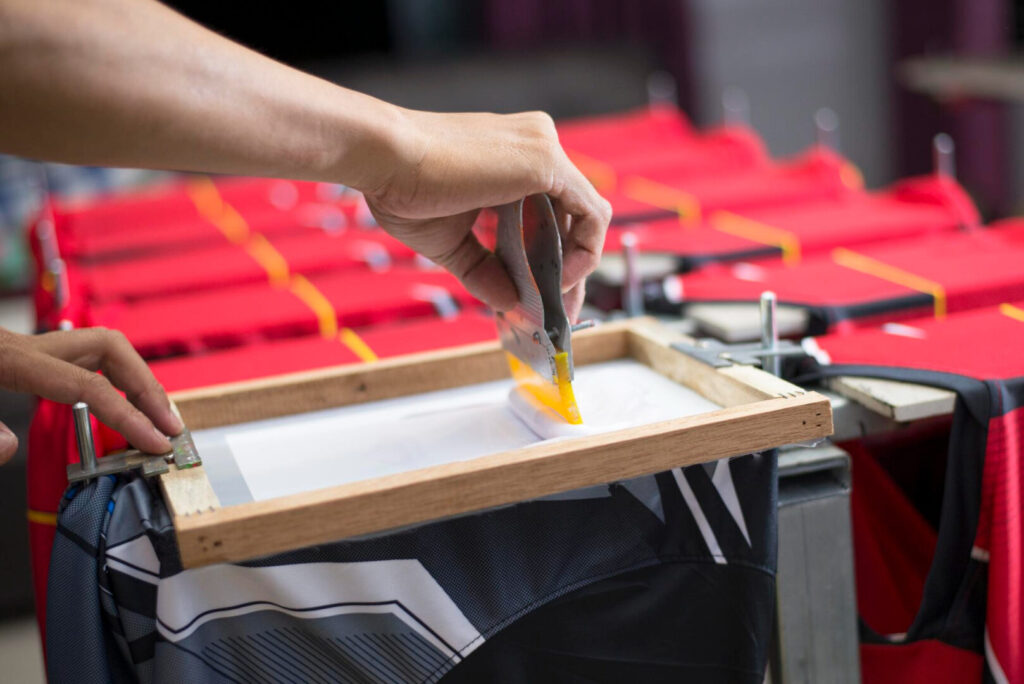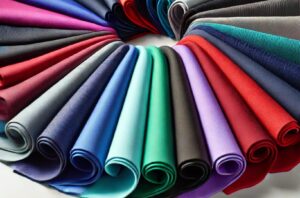Introduction
Navigating the world of custom apparel and print design can sometimes feel overwhelming, especially when you’re trying to understand the differences between various methods like sublimation vs screen printing. The choices are aplenty, and terms like these may initially sound like alien technology.
These two printing methods are often at the forefront of the discussion, but what do they mean, and more importantly, which one should you choose?
Let’s break down these terms, unpack their pros and cons, and pit them head-to-head on various criteria. The aim? To help you make an educated decision for your next custom apparel project.
What is Sublimation Printing?
Sublimation printing is a technique that leverages heat to transfer dye onto various materials like fabric, plastic, or even metal. This is achieved by converting solid ink into a gas, bypassing the liquid state—hence the name “sublimation.”
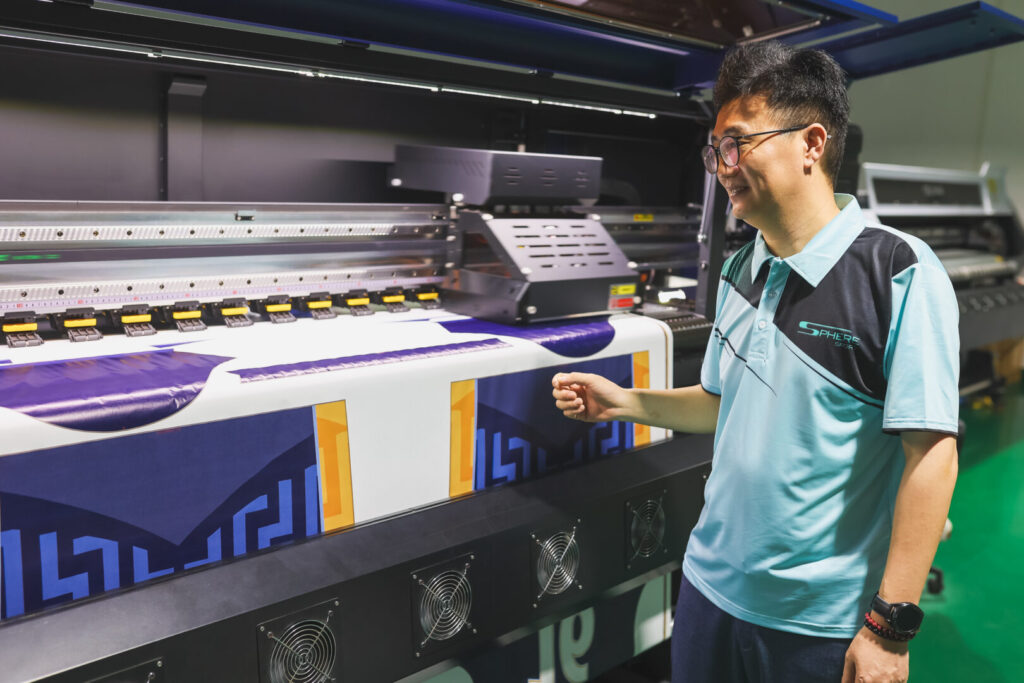
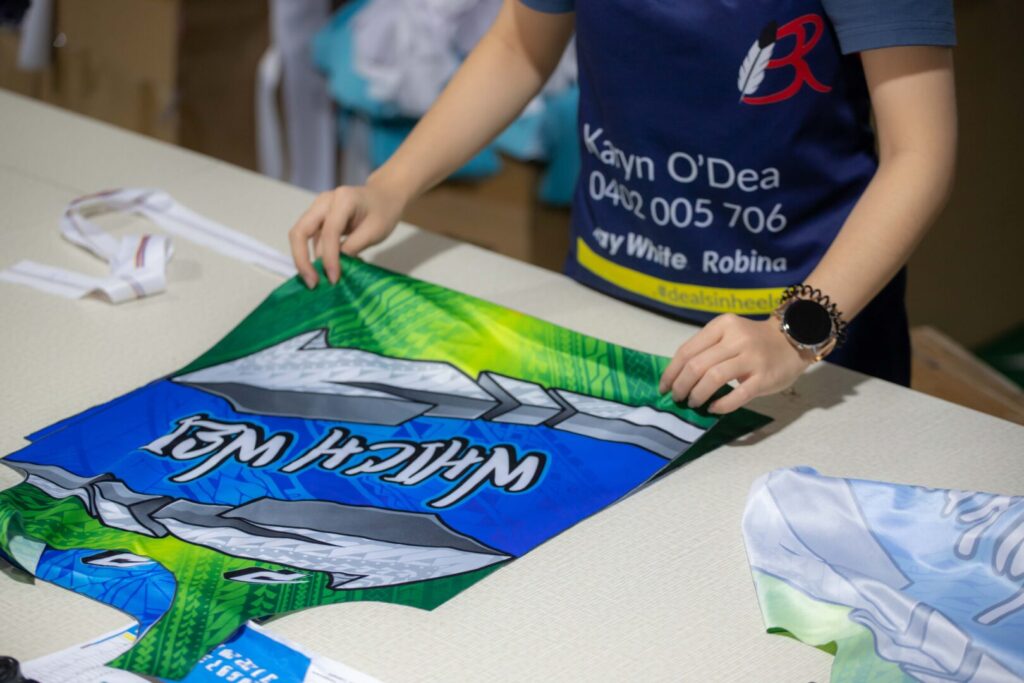
Pros:
- Unmatched Quality: Because the ink is not laid on top but rather infused into the fabric, sublimation prints offer high-definition quality that is more vibrant and lasting.
- Design Flexibility: Ideal for printing complex designs, intricate patterns, and high-resolution photographs.
- Seamless Finish: Unlike other methods where you can feel the print on the fabric, sublimation gives you a print that’s like a second skin on the material.
Cons:
- Material Constraints: Sublimation printing works exclusively on polyester and poly-coated items. If you’re a fan of cotton or other natural fabrics, this is a significant limitation.
- Cost Considerations: It can be a pricier option, especially for small orders.
What is Screen Printing?
Screen printing, sometimes called silk screening, is a time-tested technique that employs a woven mesh and an ink-blocking stencil to apply ink onto a surface. This method is favored for bulk orders and has been around for many years.
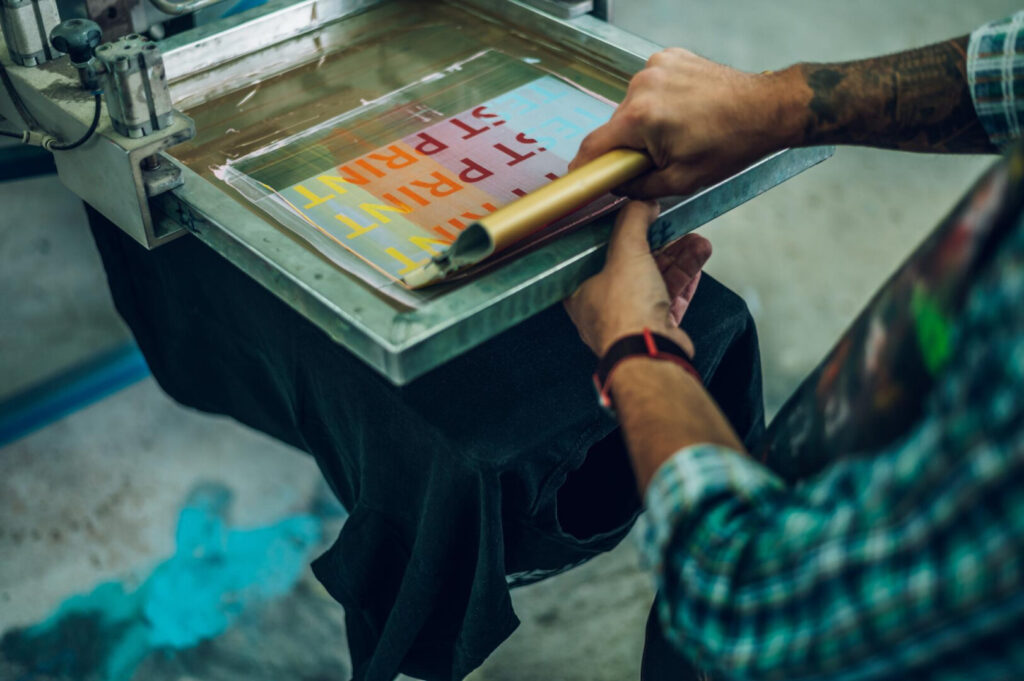
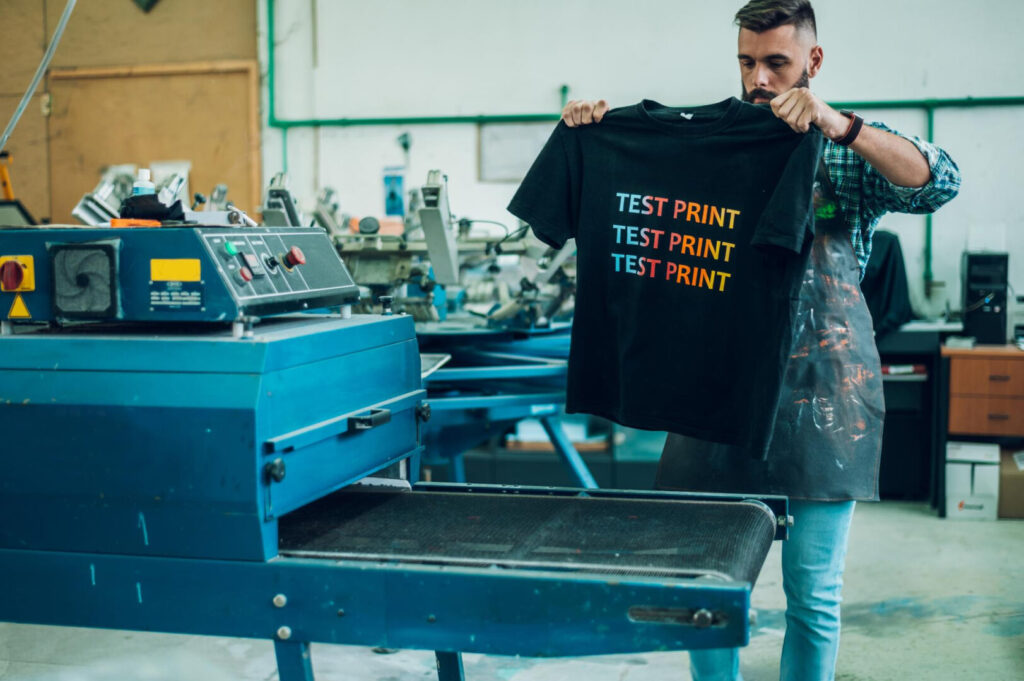
Pros:
- Durability Beyond Question: Screen prints withstand multiple washes, offering a lasting design.
- Cost-Efficiency: For large batches, the per-item cost can be significantly lower, making it an economical choice.
- Wide Material Selection: Screen printing can be applied on a variety of materials including cotton, polyester, and fabric blends.
Cons:
- Design Limitations: If you’re looking to print a design with multiple colors, the costs and complexity can increase considerably.
- Lengthy Setup: Preparing the screens can be time-consuming, making it less suitable for rush orders.
Comparing Sublimation vs. Screen Printing
In this section, we’ll put sublimation and screen printing side-by-side on key criteria, helping you determine which method best aligns with your specific project needs.
1. Material Suitability
- Sublimation: Limited to 100% polyester or high-polyester blend fabrics.
- Screen Printing: Versatile enough to accommodate a wide range of materials, from cotton to blends and synthetics.
2. Color Vibrancy and Resolution
- Sublimation: Exceptional vibrancy and color depth. Your designs will look like HD prints.
- Screen Printing: Good for solid colors but may not capture gradients and fine details.
3. Longevity and Durability
- Sublimation: Since the dye is infused, the design is as durable as the fabric it’s printed on.
- Screen Printing: While durable, the print may fade or crack over time with repeated washing.
4. Cost Implications
- Sublimation: Typically more expensive due to the specialized ink and equipment. Not cost-effective for small runs.
- Screen Printing: Economical for large orders but has additional setup fees for multiple colors.
5. Complexity and Design Limitations
- Sublimation: Virtually no limitations—photographs, complex graphics, and intricate patterns are all fair game.
- Screen Printing: Ideal for logos, text-based designs, and images with a limited color palette.
6. Turnaround Time
- Sublimation: Generally faster once the setup is complete, making it a good option for quick turnarounds.
- Screen Printing: The setup time, especially for multiple colors, can extend the production schedule.
7. Environmental Concerns
- Sublimation: Often considered more eco-friendly as it uses water-based inks and produces less waste.
- Screen Printing: Traditional methods may use plastisol inks that are less eco-friendly.
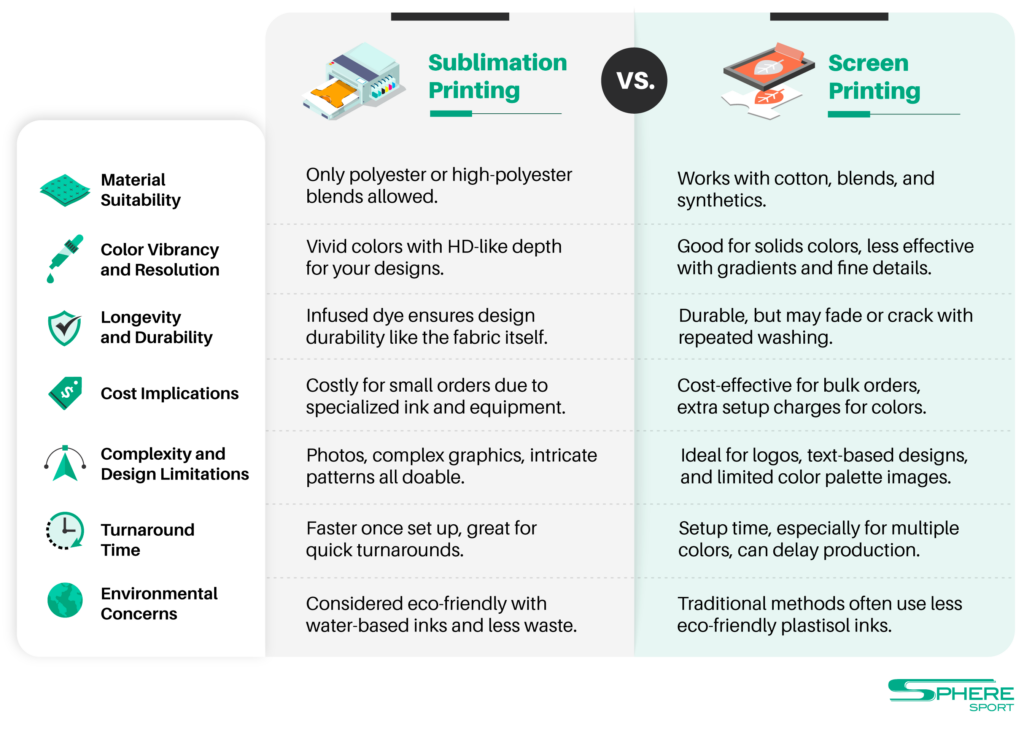
Common Uses & Applications
Both sublimation and screen printing have unique advantages that make them ideal for specific applications. Here’s a breakdown of the common uses where each technique tends to excel:
Where Sublimation Works Best
- Athletic Wear: Because sublimation doesn’t alter the breathability of the fabric, it’s a top choice for sports apparel.
- Promotional Products: Items like mugs, mousepads, and other poly-coated objects can easily be customized using sublimation.
- Photographic Apparel: If you want your clothing to feature high-quality photographs, sublimation offers the sharpest detail and richest colors.
- Signage and Banners: For vibrant and fade-resistant signs, sublimation is often the go-to method.
- Fashion Apparel: High-end fashion brands often opt for sublimation for complex patterns and designs that require a seamless, all-over print.
Where Screen Printing Works Best
- Corporate and Team Apparel: For branded T-shirts, hoodies, and uniforms, screen printing offers cost-efficiency and durability.
- Merchandising: Band t-shirts, event merchandise, and retail-ready apparel often use screen printing for their mass-production capabilities.
- Tote Bags and Backpacks: The durability of screen printing is ideal for items like tote bags that will be used and washed repeatedly.
- Posters and Wall Art: The technique can be applied to paper and canvas, making it a popular choice for artists and illustrators.
- Home Décor: Screen printing can be applied to cushion covers, wall hangings, and other textiles for a long-lasting and vibrant design.
Multi-Purpose Applications
Some projects may even benefit from a hybrid approach. For example, a sportswear line could use sublimation for the intricate designs and screen printing for the robust logos and numbers. The key is to understand the strengths and limitations of each method and to apply them where they offer the most value.
So, whether you’re planning to launch a high-end fashion line, need uniforms for your local sports team, or are gearing up for a large corporate event, understanding the applications of these two methods can significantly impact the success of your project.
The Final Verdict
Choosing between sublimation vs screen printing hinges on various factors—material, design complexity, cost, and turnaround time.
If you’re opting for intricate, colorful designs on polyester fabrics, sublimation is your go-to choice. On the flip side, if you need a cost-effective solution for bulk printing on a variety of fabrics, screen printing is more apt.
Still undecided on whether sublimation or screen printing is the right fit for your sportswear or team uniforms?
Don’t fret—Sphere Sport is here to help you navigate these choices with ease. With years of industry expertise and a passion for quality, we can guide you through every step of the process to ensure you get the perfect end product.
Whether you’re a small league or a big brand, we offer tailored solutions to meet your needs. Get in touch with us today to take your sportswear and team uniforms to the next level.

